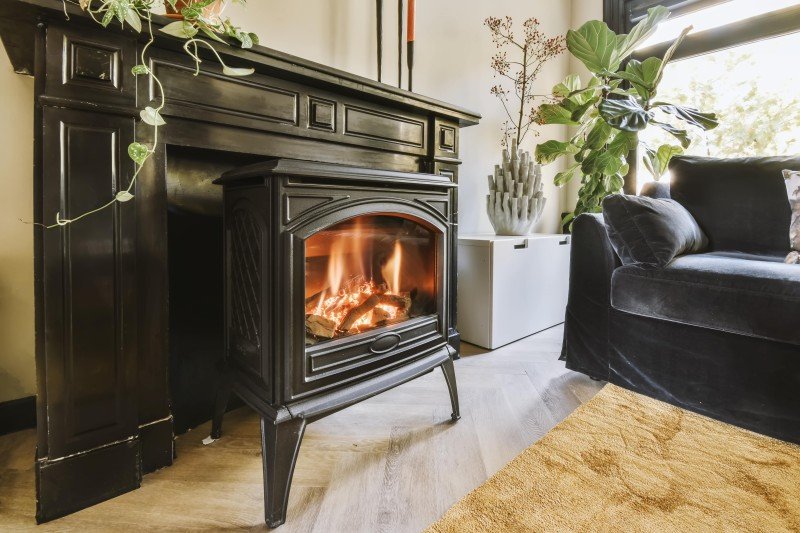Freestanding Stoves for Sale: The Ultimate Guide
Freestanding stoves, also referred to as standalone stoves, are an increasingly popular choice for house owners looking to boost the heating efficiency and aesthetic appeal of their home. They come in a myriad of styles, sizes, and fuel options, providing versatility to meet the diverse requirements of consumers. This post explores numerous elements of freestanding stoves, including their benefits, types, and functions, in addition to a guide to acquiring the ideal range.
What is a Freestanding Stove?
A freestanding stove is a heating appliance that is not constructed into a wall or kitchen cabinetry. Rather, it stands independently in a room and can be put in different areas, making it a versatile heating option. Cheap Fireplaces can use different fuels, such as wood, gas, or pellets, and are created to provide heat while enhancing the ambiance of an area.
Benefits of Freestanding Stoves
Freestanding stoves are preferred for a number of reasons:
- Heating Efficiency: Freestanding stoves can generate significant heat output while being fuel-efficient.
- Aesthetic Appeal: With numerous designs ranging from traditional to contemporary, they can be a focal point in any space.
- Setup Flexibility: They can be put in diverse areas, enabling simple combination into existing home layouts.
- Affordable: Many freestanding stoves are more economical to install compared to built-in systems.
- Heat Distribution: They can efficiently distribute heat through the convection procedure, heating up the surrounding location.
Types of Freestanding Stoves
Freestanding stoves been available in various types based upon their fuel source, including:
| Type | Description |
|---|---|
| Wood Stoves | Usage traditional wood logs for fuel, offering a rustic appeal and a distinct atmosphere. |
| Gas Stoves | Operate using natural gas or gas, offering practical and manageable heating. |
| Pellet Stoves | Use compressed wood pellets as fuel, understood for their efficiency and eco-friendliness. |
| Electric Stoves | Use electrical energy as a power source, available in various designs, frequently including modern designs. |
Secret Features to Consider
When looking for a freestanding stove, several functions need to be taken into consideration:
- Heat Output (BTUs): Consider the size of the location you wish to heat and choose a stove with an appropriate BTU rating.
- Size and Design: Ensure the range fits the space and complements the room's design.
- Fuel Type: Decide on the most convenient and affordable fuel type for your home.
- Efficiency Ratings: Look for the range's efficiency scores (like EPA accreditation for wood stoves) to ensure you're making an environment-friendly option.
- Security Features: Consider models with safety functions such as auto shut-off, heat resistant glass, or low-clearance choices.
Purchasing a Freestanding Stove
When thinking about purchasing a freestanding range, it is essential to evaluate a number of important aspects to guarantee you invest wisely:
1. Spending plan
Setting a clear spending plan is important when purchasing a freestanding stove. Prices can vary commonly based on the type, brand, and functions:
- Basic Models: ₤ 800 - ₤ 1,500
- Mid-Range Models: ₤ 1,500 - ₤ 3,000
- High-End Models: ₤ 3,000 - ₤ 6,000+
2. Research Brands and Models
Thorough research can help you uncover different choices in the market. Some noteworthy brands in the freestanding stove market include:
- Jøtul
- Quadrafire
- Regency
- Lopi
- Harman
3. Speak with Reviews
Check out consumer evaluations and expert ratings online to acquire insights into the performance and reliability of different designs.
4. Regional Regulations
Check regional building regulations and regulations relating to stove installation, specifically for wood and gas stoves, to ensure compliance.
5. Setup
Consider expert installation, especially for gas or wood designs, as they often need unique ventilation or flue systems.
FAQs About Freestanding Stoves
1. Are freestanding stoves safe to utilize?
Yes, when correctly set up and preserved, freestanding stoves are safe. Nevertheless, it's vital to follow the maker's guidelines and regional codes.
2. How do I keep my freestanding stove?
Routine maintenance consists of cleaning the flue or chimney, checking for blockages, and guaranteeing all elements are functioning properly. Yearly evaluations by a certified professional are recommended.
3. Can I use a freestanding stove as a primary heating source?
Yes, lots of property owners utilize freestanding stoves as primary heating sources, specifically in locations where traditional heating may be limited.
4. Are freestanding stoves energy-efficient?
Numerous newer designs are developed for high efficiency, offering better heat retention and lower emissions compared to older models.
5. What is the typical life-span of a freestanding range?
With correct upkeep, the typical lifespan of a premium freestanding stove can be around 15 to 20 years.
Freestanding stoves are a useful and trendy choice for heating homes. By comprehending the different types, benefits, and features available, homeowners can make informed choices that match their choices and heating needs. Whether choosing a wood, gas, pellet, or electric range, purchasing a quality model will provide heat, atmosphere, and fulfillment for many years to come.

